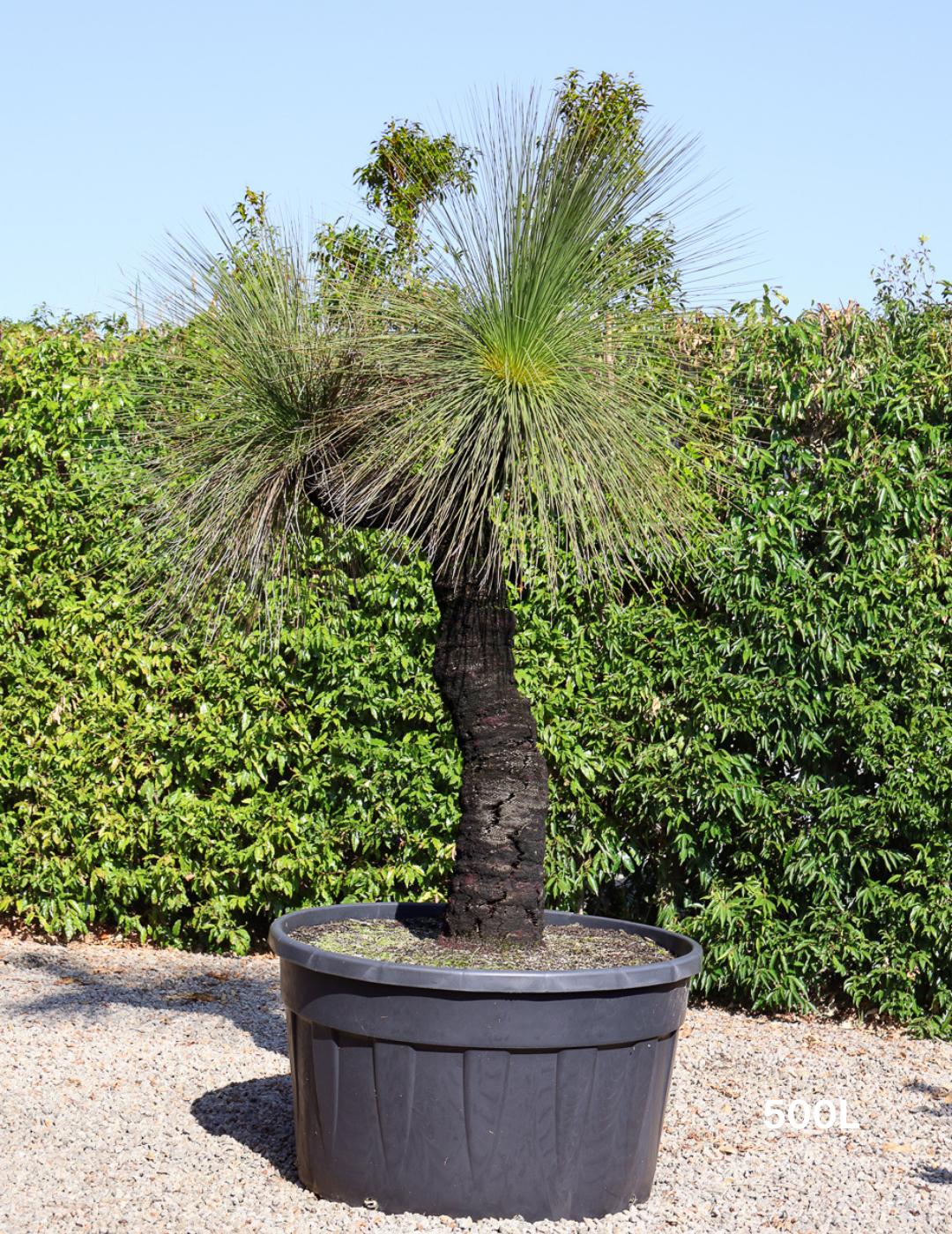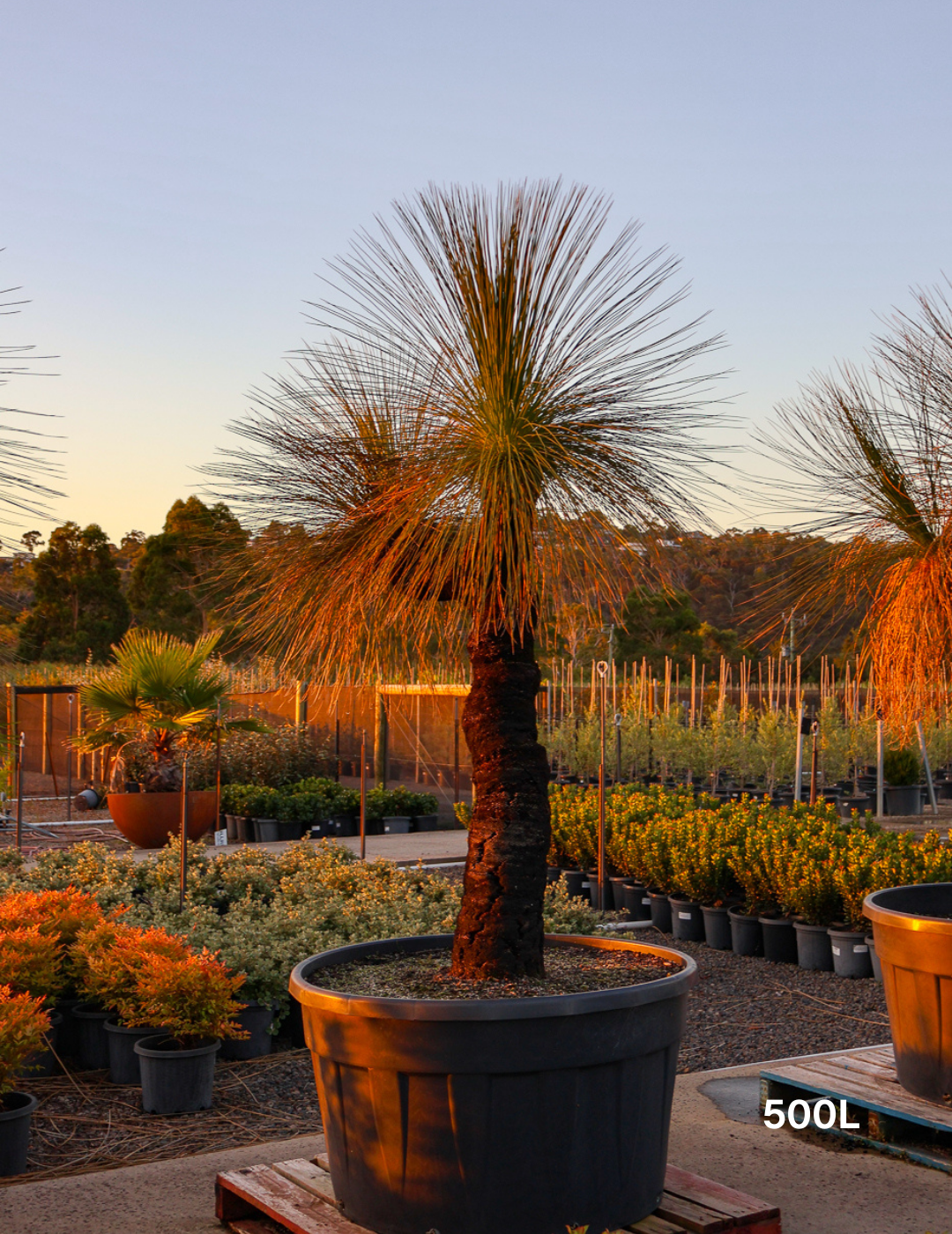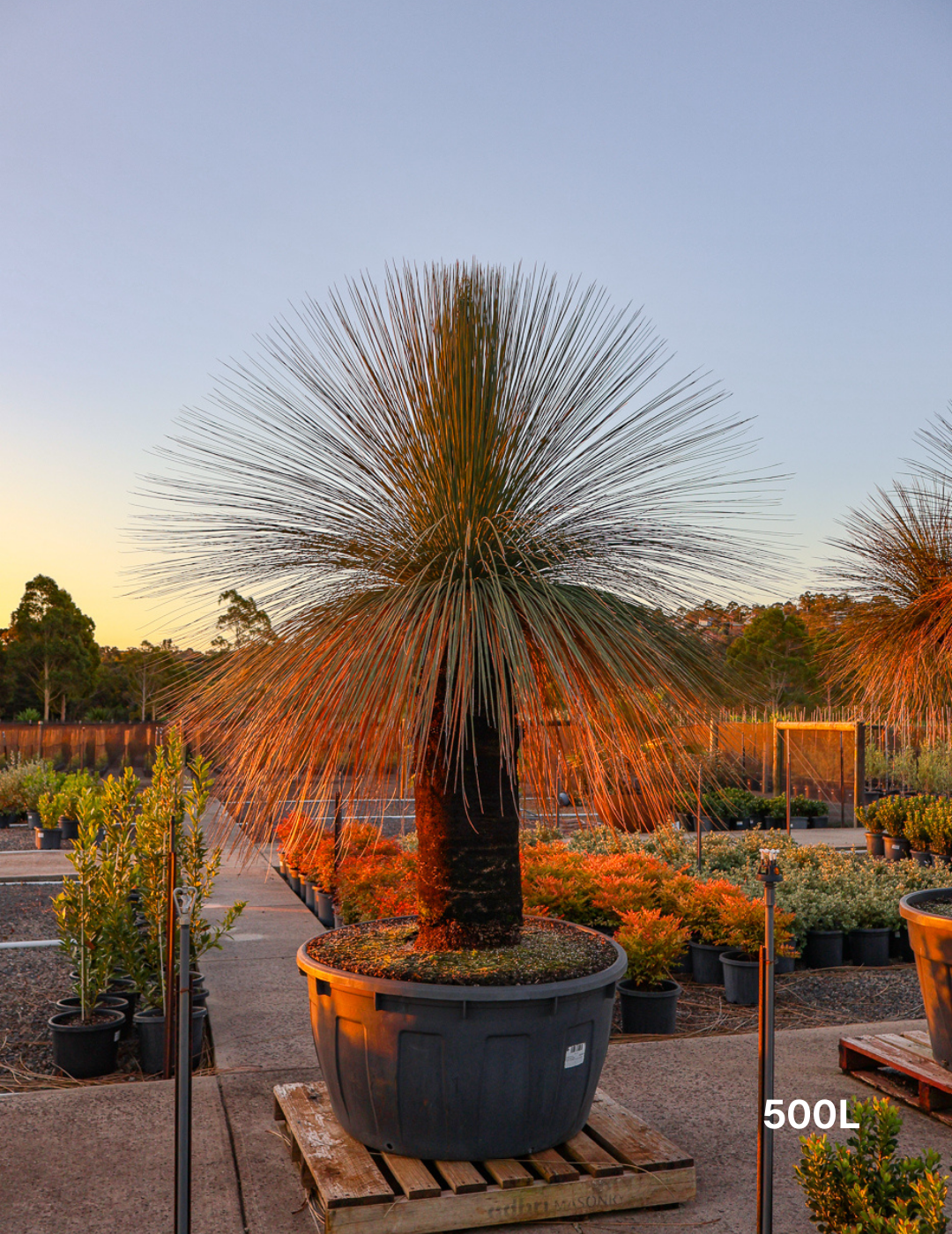










Xanthorrhoea
- Regular price
- $13,000.00
- Sale price
- $13,000.00
- Regular price
-
Learn About Your New Xanthorrhoea
Xanthorrhoea species, iconic to Australia, are known for their extraordinary form - a thick, woody trunk crowned with a dense tuft of grass-like foliage. The common name, Grass Tree, is derived from their grass-like leaves, and their remarkable ability to survive fires. They are not only a striking sculptural element in the landscape but are also of cultural significance to Indigenous Australians.
Common Name: Grass Tree
Mature Height: Depending on the species, can range from 1 to 6 meters in height, with very slow growth rates.
Mature Width: The leaf crown can spread 1-3 meters across.
Spacing: Plant at least 2-3 meters apart from other plants, as they need space to accommodate the spread of their foliage.
Foliage: Long, linear, grass-like leaves that form a skirt around the trunk.
Flowering Period: When mature, they produce a spectacular flower spike that can be up to 2 meters in height, with white to creamy flowers that attract nectar-feeding birds and insects.
Form/Habit: A singular trunk with a tufted head of grass-like foliage. The trunk is often blackened by bushfires, hence the name Blackboy.
Uses: Used as a feature plant in gardens and landscaping, their dramatic appearance is a highlight in native and xeriscape gardens.
Evergreen/Deciduous: Evergreen, providing year-round interest.
Tolerates: Very tolerant of poor soils, drought, and fire.
Drought Hardy: Extremely drought-resistant once established.
Sun: Prefers full sun but can tolerate light shade.
Maintenance: Very low; requires minimal pruning and care once established.
Additional Information
- Soil Preferences: Thrives in well-drained, sandy or gravelly soils. Avoid soils that retain moisture.
- Watering Needs: Water sparingly; too much water, especially in poorly drained soils, can lead to root rot.
- Wildlife Attraction: Flowers attract a host of wildlife, including bees, butterflies, and birds.
- Propagation: Generally propagated from seed but can be slow and requires patience. Division of clumps is possible but can be difficult and should be done by experts.
- Pests/Diseases: Resistant to most pests and diseases. Root rot can be a problem if the soil is not well-drained or if overwatered.
- Landscape Design Tips: Plant as a standalone feature or amongst low-lying shrubs to create a varied height landscape. They can also be used effectively in rockeries.
Need Assistance For Your Next Project? Let Us Help.
Evergreen Trees Direct is Australia's unrivaled supplier of the highest quality advanced tree stock. Our extensive supplier network allows us to provide a one-stop shop for all your landscaping needs, no matter how big or small the project. We pride ourselves on exceptional service, ensuring a seamless experience from selection to delivery. Trust us to bring your landscaping vision to life with the perfect trees for any outdoor space. With our unrivaled selection and commitment to service, Evergreen Trees Direct is the top choice for landscapers, property developers, and garden enthusiasts alike.
-
 A layered, resilient coastal garden designed to withstand harsh salt winds and seasonal extremes. This Mornington Peninsula property features a cur...
A layered, resilient coastal garden designed to withstand harsh salt winds and seasonal extremes. This Mornington Peninsula property features a cur... -

Brighton Project
Presenting our recent project in Brighton, Victoria, landscaped by Jack Merlo Landscape & Design. This modern landscape features a variety of h... -

Horizon House, Flinders
Horizon House in Flinders blends nature with bold architectural design, using natural elements to enhance its modern aesthetic.Acer Palmatum (Japan...















